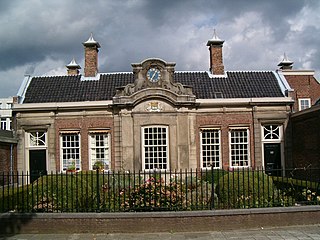
The Hofje van Noblet is a hofje in Haarlem, Netherlands.

The Frans Loenenhofje is a hofje in Haarlem, Netherlands, on the Witte Heren straat.
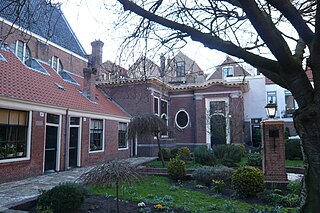
The Lutherse Hofje is a hofje in Haarlem, Netherlands.

The Hofje van Staats is a hofje in Haarlem, Netherlands, on the Jansweg 39, close to the Haarlem railway station.

The Hofje van Loo is a hofje on the Barrevoetstraat 7 in Haarlem, Netherlands.
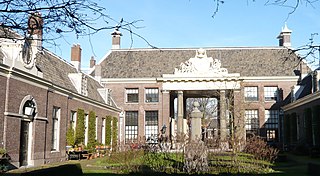
The Teylershofje is a hofje in Haarlem, Netherlands with 24 houses.

Haarlem is one of the cities in the Netherlands that has a number of hofjes. Some of them are even still in use with boards of regents. Many of these are members of the Stichting Haarlemse Hofjes. The word 'hofje' just means small garden, because the hofjes are generally small houses grouped around a community kitchen garden with a water pump. Often they were attached to a larger field for bleaching linen or growing orchards, but today those fields have been long used for city expansion and only the central gardens can still be seen.
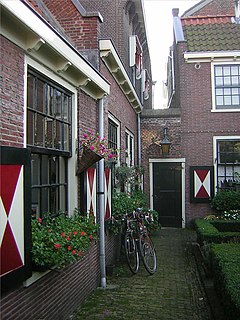
The Bruiningshofje is a hofje in Haarlem, Netherlands.

The Hofje van Willem Heythuijsen is a hofje in Haarlem, Netherlands. It was founded in 1650 by the testament of Willem van Heythuysen on the site of his summer residence outside the city walls of Haarlem on land that was considered Heemstede property until it was annexed in 1927. It is one of the few hofjes of Haarlem to be built outside the city walls. It has a 'T' shape and has a small open courtyard and a garden still intact.

The Vrouwe- en Antonie Gasthuis is a hofje on the Klein Heiligland 64a in Haarlem, Netherlands. It is open on weekdays from 10-17.00.

Willem van Heythuysen, was a Dutch cloth merchant and hofje founder in Haarlem and Weert. He is best known today for his portraits by Frans Hals, though he is remembered locally for his Hofje van Willem Heythuijsen bordering Haarlemmerhout park, which has been in operation for centuries.

The Proveniershuis is a hofje and former schutterij on the Grote Houtstraat in Haarlem, Netherlands.

The Hofje van Codde en Beresteyn is a hofje in Haarlem, Netherlands. The current building is from 1968 and is located on the J. Cuyperstraat, which is named for the architect who designed the Cathedral of Saint Bavo next door, Joseph Cuypers. This hofje is the wealthiest hofje foundation in Haarlem with the most modern facilities for its inhabitants. Poor (devote) Catholic women of Haarlem 60 years and older are still welcome to live there for free.

The St. Elisabeth Gasthuis (EG) is a former hospital complex of buildings founded in 1581 in Haarlem on the Gasthuisvest. The last location of the hospital on the Boerhaavelaan retains its hospital function and is part of the Kennemer Gasthuis (KG) today. The hospital complex on the Gasthuisvest was built for the "Minnebroers" monastery and was reclaimed after the Protestant reformation in 1581 and given by the city council to the hospital. As a hospital during four centuries, the complex underwent many major renovations. The main facade dates from 1871.

The Coomanshof is a former hofje in Haarlem, Netherlands, on the Witte Heren straat.

Paulus van Beresteyn, was a Dutch lawyer in Haarlem, known best today for his portrait painted by Frans Hals in 1619.

Joseph Coymans, was a Dutch businessman in Haarlem, known best today for his portrait painted by Frans Hals, and its pendant, Portrait of Dorothea Berck. The former resides at the Wadsworth Atheneum in Hartford, the latter at the Baltimore Museum of Art. A portrait of the couple's son Willem is held by the National Gallery of Art in Washington, D.C.
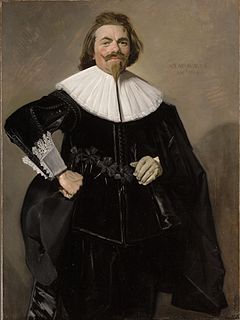
Tieleman Roosterman, was a Dutch cloth merchant and friend of Willem van Heythuysen who is best remembered today for his portrait painted by Frans Hals.

The Haarlem schutterij refers to a collective name for the voluntary civic guard of Haarlem, from medieval times up to the Batavian Revolution in 1794, when the guilds of Haarlem were disbanded.





























